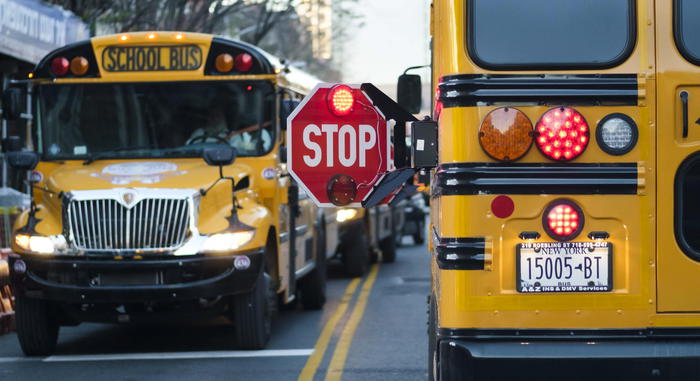The number of homeless students in New York City’s public schools during the 2023-2024 academic year has reached a record high, according to a recently published analysis. This alarming figure has been exacerbated by the arrival of thousands of migrants, further straining an already critical situation.
The nonprofit organization Advocates for Children of New York reported that approximately 146,000 students were classified as homeless in the past year, marking a 22% increase from the 119,320 recorded in the previous period. This means that one in eight students in the city is living in precarious housing conditions, such as temporary shelters or shared apartments with other families.
The city’s economic crisis has driven more children into transitional housing, while the arrival of an estimated 50,000 migrants has further inflated these numbers.
Data shows that the problem is particularly severe in districts like Upper Manhattan, the southwest Bronx, and parts of Brooklyn, where the number of students in makeshift housing has risen significantly.
Jennifer Pringle, director of the Advocates for Children project, described the situation as “inconceivable,” noting that every year, tens of thousands of students lack stable housing. She urged the administration to focus not only on securing permanent housing but also on ensuring that students receive the support they need to succeed in school.
Homelessness heavily impacts education: children living in transitional housing face greater academic challenges, frequent absences, and a higher risk of dropping out of school.
Mayor Eric Adams’ decision to impose a 60-day limit on stays in shelters for migrant families has further heightened instability. Last spring, city council members highlighted that one in five students evicted from shelters under this policy was no longer enrolled in the schools they had attended before the eviction.
Christine Quinn, president of Win, a network of supportive housing, called the statistics “staggering” and a clear indictment of city policies. She also criticized the 60-day limit as “cruel and ineffective,” urging officials to increase the availability of housing vouchers for homeless families.
Amid this social and educational emergency, the Big Apple stands at a crossroads. While addressing the housing crisis, it is essential to ensure that schools remain a source of stability and opportunity for the city’s most vulnerable young residents.












